The Cutting, Lower Heidelberg Road circa 1929
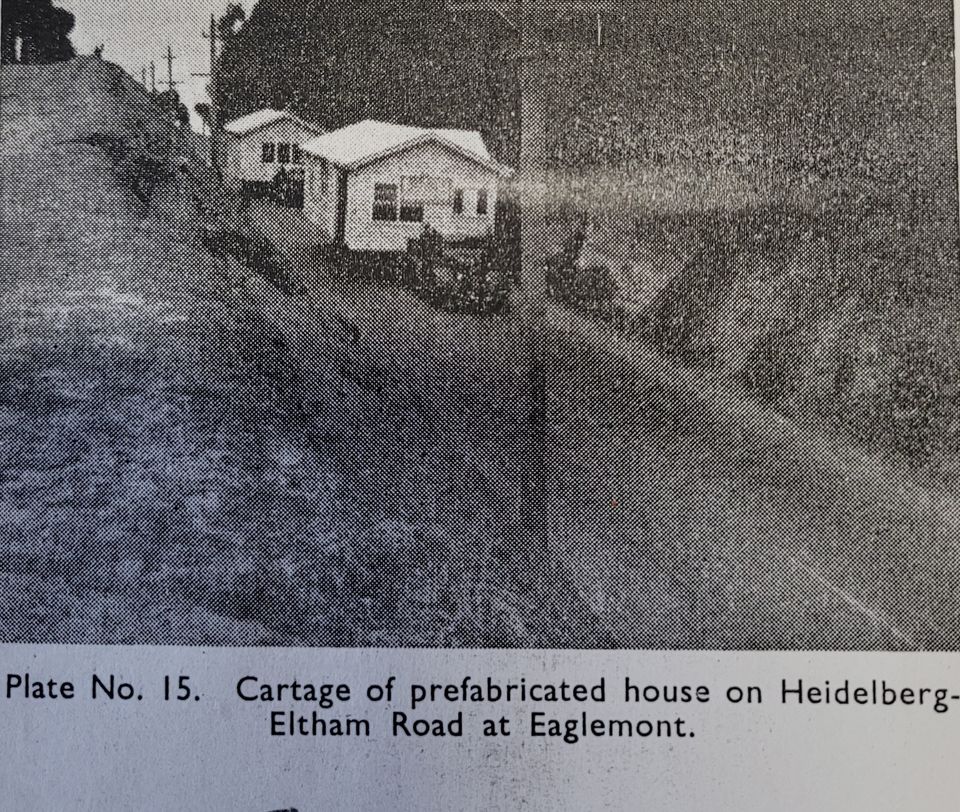
This is probably the best picture I have seen of The Cutting.
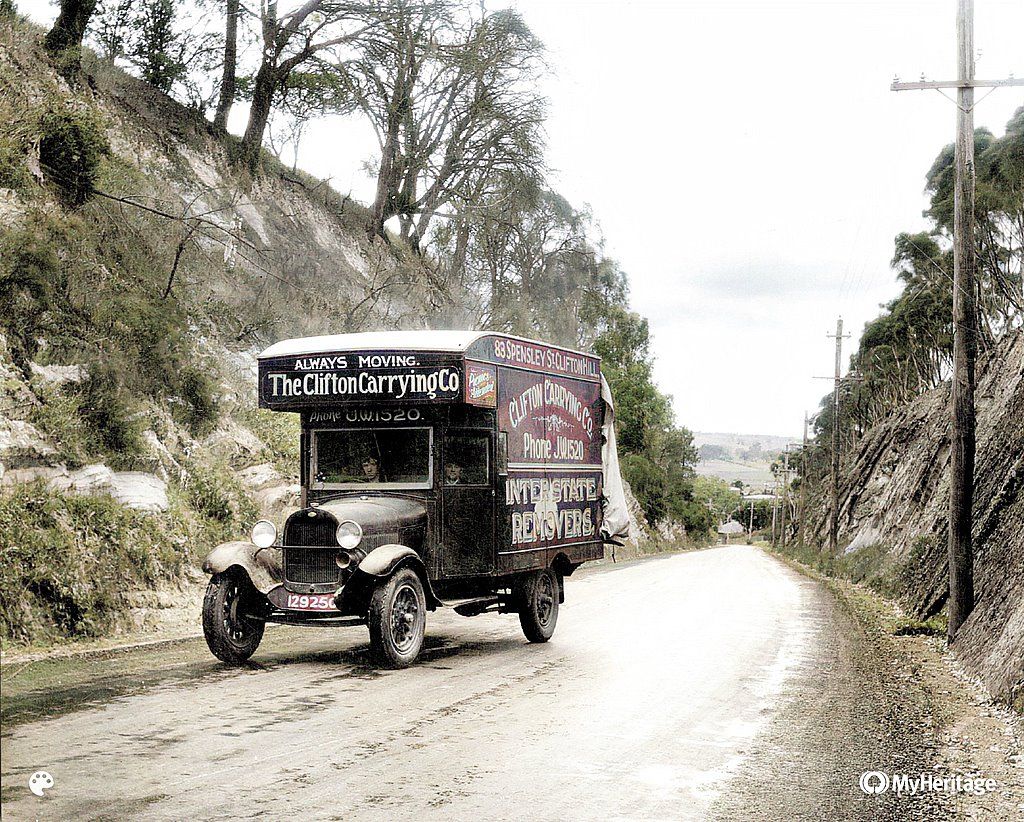
Locals know The Cutting. Commuters know the congestion of The Cutting and the long slow crawl through East Ivanhoe & Heidelberg.
On 23 February 1972 The Heidelberger reported that Lower Heidelberg Road had been blocked by rock falls in The Cutting.
Two months later plans were presented to Heidelberg Council for widening of The Cutting.
In June 1972 community representatives from Eaglemont met with the Public Works Committee of Heidelberg Council and the provision of a pedestrian overpass, which never eventuated.
Even the National Trust was dragged in - The Cutting was given a temporary status as a Landscape of Significance!
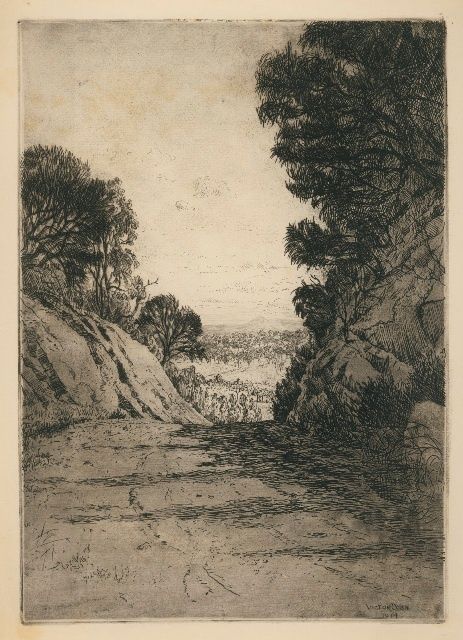
Our subscriber Peter of Thorseby Grove provides the picture of the van, and the story attending it.
The van was the livelihood of the driver - the father of Peter's "over 70 y.o." friend, who now lives in Locksley Road.
He had come to Australia from the USA with insights on the emergence of a long-distance trucking industry.
His truck had a custom-made enclosed cargo area - the compartment over the cab is the first appearance here of this design.
In 1929 the heady days of flappers and post-WW1 recovery was about to come to a shuddering halt as what became known as the Great Depression squeezed the life from the economy.
Credit quickly became unobtainable for the self-employed, for small business and even governments.
The van driver had work - carrying jobs - but no fuel, and no money to pay cash for fuel. The normal monthly "store credit" and monthly accounts ceased.
Pleas for more fuel on credit from the Shell Oil Co. to get the funds to pay the outstanding bill fell on deaf ears.
We know the Clifton Carrying Co. managed to survive through to 1933 because our indefatigable correspondent Nilss of Innsbruck found this Lost classified advertisement:
The Age, 17.05.1933, Page 1
LOST
SPARE Tyres, 25 x 4.75, between Sherbrooke and Clifton Hill, via Burwood-rd., between 5 and 7 p.m. Reward. Clifton Carrying Co. JW1520.
The business was bankrupted due to the economy, and the Clifton Carrying Company of 88 Spensley Street Clifton Hill was no more.
Our current inflation, borrowing levels and interest rates makes for tough, anxious times for many.
Hard times seem to afflict the small players especially.
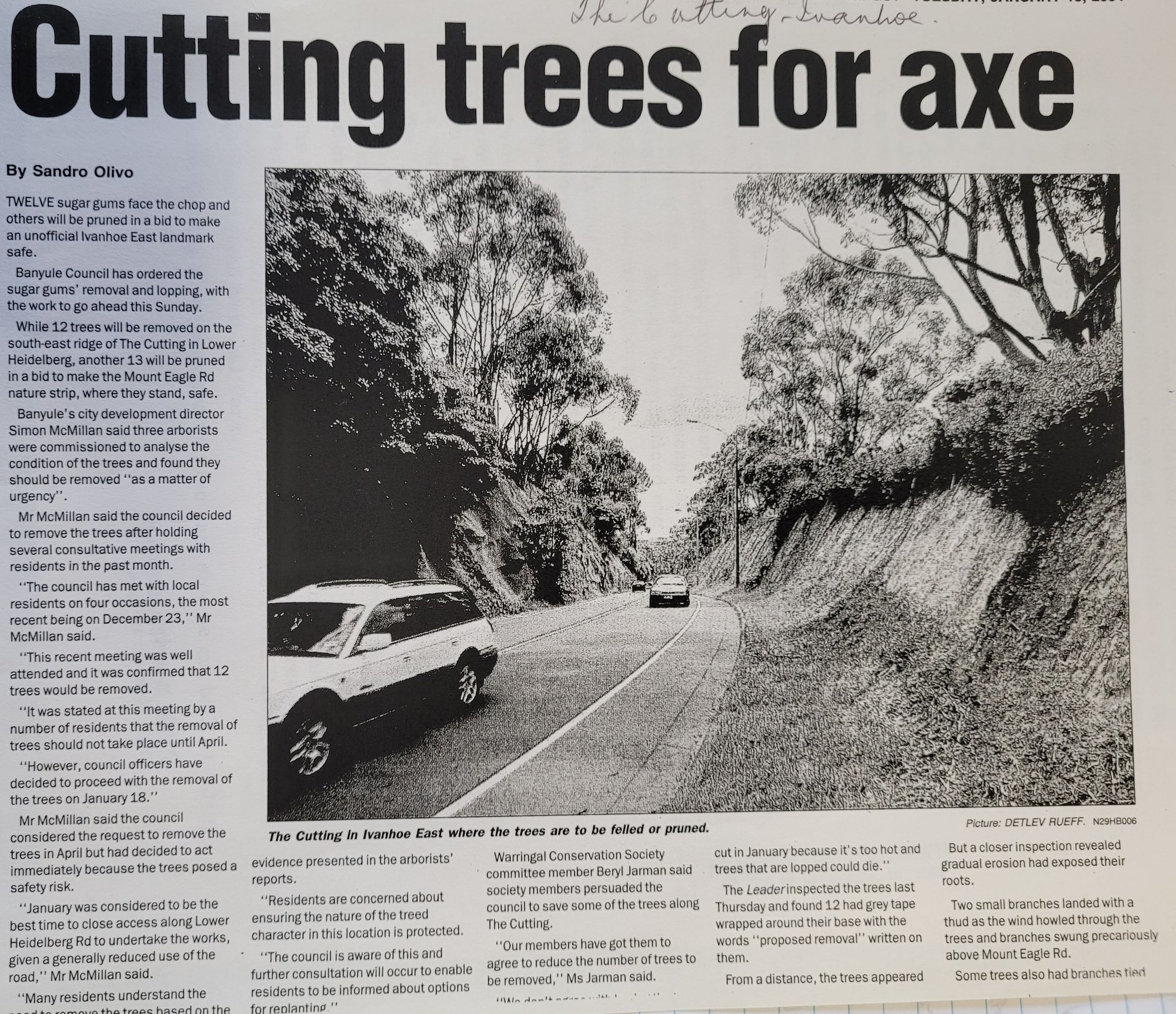
Widening The Cutting meant removing about 12 metres width of the eastern side which was more prone to crumble onto the road. (Note the texture in the etching above.)
Over the years Council had to regularly remove rocks that tumbled onto the carriageway - until they hit on the technique of trapping the fallen material in a culvert.
The western (higher batter) attracted the artistic interest of one John Neeson of Rosanna:
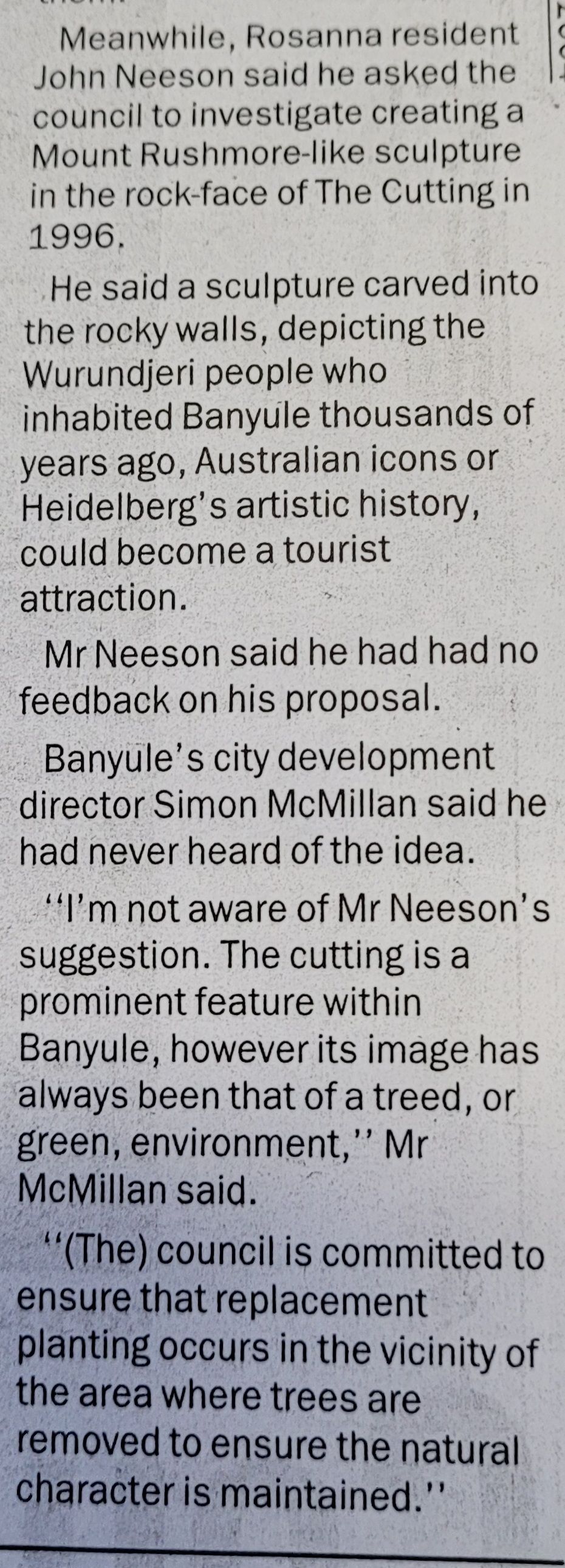
(Newspaper clippings courtesy of Heidelberg Historical Society)
Member discussion